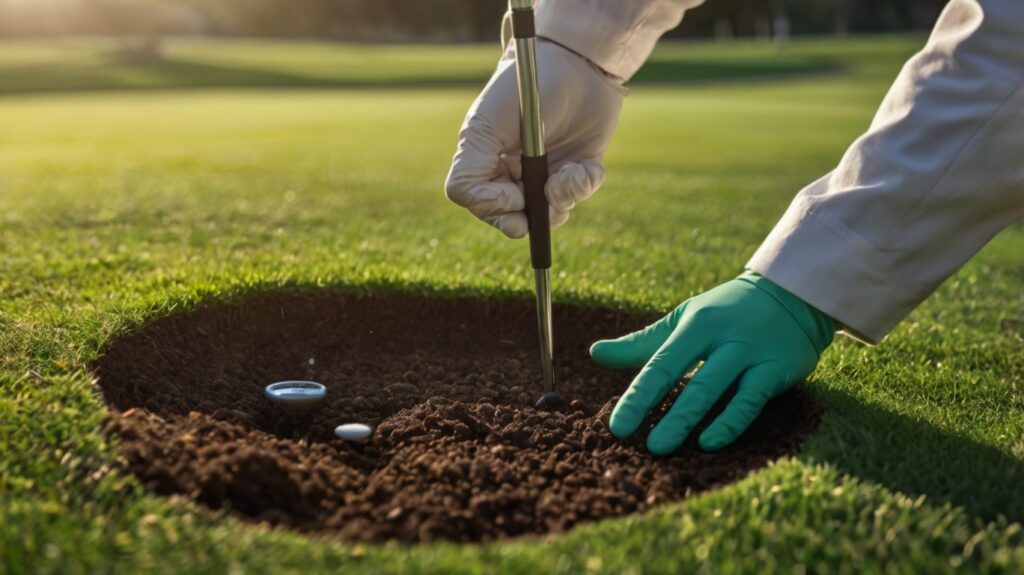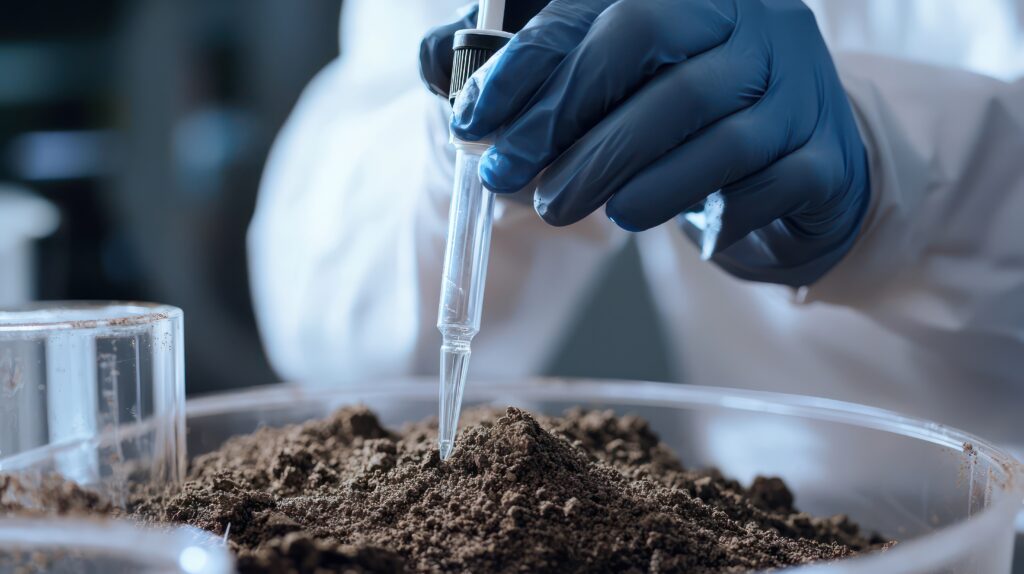Proper soil engineering is fundamental to constructing and maintaining a golf course that not only looks immaculate but also endures heavy traffic, diverse weather conditions, and the demands of modern play. While chemical and physical soil properties often receive close attention, structural and engineering soil tests can be the deciding factor between a course that quickly degrades and one that delivers consistent, high-level performance for years. This comprehensive guide explores the most critical engineering-based soil tests, showing how they influence drainage, stability, turf health, and overall playability.
Why Structural and Engineering Tests Are Critical for Golf Course Construction & Maintenance
Golf courses require a stable foundation capable of withstanding foot and cart traffic, maintenance equipment, and natural forces like rain and wind. Engineering and structural soil tests:
- Identify Stability Issues: Such as slope failures or subsurface layering that lead to drainage and rootzone problems.
- Optimize Drainage: Ensuring water moves through soil profiles efficiently, preventing puddling and turf damage.
- Extend Course Lifespan: Sound engineering enhances turf resilience, minimizing costly renovations down the road.
The Role of Soil Mechanics in Drainage, Stability, and Turf Longevity
Soil mechanics examines how soils behave under load, compaction, and moisture changes. For golf courses, this translates into:
- Traffic Tolerance: Keeping fairways and greens firm and even despite repeated compaction.
- Consistent Playability: Maintaining uniform surfaces for ball roll and shot-making.
- Reduced Maintenance Costs: Preventing excessive erosion, sinkholes, or drainage failures that require expensive fixes.
How Engineering Tests Influence Course Design and Reconstruction
From new course construction to green renovations or bunker redesigns, engineering tests inform architects and superintendents about which soils to amend, replace, or reinforce. A data-driven approach leads to more durable designs, fewer surprises, and better cost management.
1. Shear Strength Test: Evaluating Soil Stability for Golf Course Turf
What Is Shear Strength and Why Does It Matter in Golf Course Management?
Shear strength is the soil’s resistance to sliding or shearing forces. On a golf course, shear strength matters for:
- Slope Stability: Preventing landslides or washouts in hilly terrain.
- Turf Traction: Ensuring turf surfaces remain firm under foot and vehicle traffic, especially in wet conditions.
How Shear Strength Affects Traffic Tolerance and Soil Erosion
- High Shear Strength: Resists compaction and erosion, supporting heavy traffic without rutting.
- Low Shear Strength: Prone to deformation under loads, leading to uneven playing surfaces and poor drainage.
Methods for Testing Shear Strength in Turf Soils
- Laboratory Triaxial Test: Provides a comprehensive measure of soil cohesion and internal friction angles.
- Field Shear Vane Test: Offers a quick, on-site reading of shear strength, useful for spot-checks.
Strategies for Enhancing Soil Stability and Reducing Wear
- Soil Amendments: Incorporate sand or organic matter to adjust texture and improve frictional properties.
- Reinforcement Materials: Geotextiles or mesh layers can bolster slopes and high-traffic zones.
- Routine Cultivation: Aeration keeps soils from compacting too tightly, preserving shear strength over time.
2. Atterberg Limits (Liquid & Plastic Limits): Determining Soil Plasticity and Workability
What Are Atterberg Limits and How Do They Impact Golf Course Construction?
The Atterberg Limits—Liquid Limit (LL) and Plastic Limit (PL)—define the moisture content at which soil transitions between solid, plastic, and liquid states. This data is crucial for:
- Workability: Understanding how soil responds to varying moisture levels during construction.
- Soil Selection: Determining which materials or amendments will create a stable rootzone.
Testing for Liquid Limit, Plastic Limit, and Plasticity Index
- Liquid Limit (LL): The moisture content at which soil changes from plastic to liquid behavior.
- Plastic Limit (PL): The moisture content at which soil crumbles rather than deforms plastically.
- Plasticity Index (PI): The difference between LL and PL, indicating soil’s overall plasticity range.
Understanding Soil Behavior Under Moisture Changes
Soils with a high plasticity index are more reactive to moisture fluctuations, leading to swelling and shrinking cycles that can damage turf and substructures. Low PI soils are more stable under wet-dry cycles, ideal for golf surfaces.
How Atterberg Limits Help Select Suitable Soil Amendments
- Sandy Loams or Loamy Sands: Lower PI, offering good drainage and stable putting surfaces.
- Clayey Soils: Higher PI, often requiring amendments (e.g., sand, gypsum) to reduce shrink-swell potential.
3. Soil Settlement & Expansion Test: Assessing Soil Movement and Instability Risks
Why Settlement and Expansion Matter in Golf Course Design
Settlement occurs when soil compresses under load over time, while expansion (swelling) happens in soils with high clay content. Both can cause:
- Uneven Playing Surfaces: Creating an inconsistent ball roll and potential safety hazards.
- Drainage Failures: As soils shift, drain lines and slopes may become misaligned.
The Effects of Expansive Soils on Turf Stability and Drainage
Expansive soils (e.g., those high in montmorillonite clays) can swell significantly when wet and shrink when dry, stressing turf roots and compromising the entire rootzone structure.
Testing Methods to Predict Soil Shrink-Swell Behavior
- Free Swell Test: Measures volume changes when soils are saturated.
- Consolidation Test: Evaluates how soil compresses under incremental loading over time.
Techniques to Mitigate Soil Movement Issues in High-Performance Turf
- Pre-Construction Stabilization: Lime, fly ash, or other stabilizers to reduce plasticity and swelling.
- Controlled Water Management: Ensuring consistent moisture levels to limit dramatic wet-dry cycles.
- Layered Rootzone Construction: Incorporating sand or geotextile layers to buffer expansive subsoils.
4. Soil Compaction and Load-Bearing Capacity: Ensuring Durability of Golf Course Infrastructure
The Impact of Soil Compaction on Turf Health and Drainage
Compaction reduces macropores, limiting oxygen and water infiltration. This can lead to:
- Shallow Rooting: Turf struggles to develop deep, robust root systems.
- Increased Runoff: Poor infiltration leads to waterlogged or excessively dry spots.
How to Measure Load-Bearing Capacity for Golf Course Features
- Penetrometer Tests: Offer a quick in-field compaction reading, valuable for fairways and roughs.
- CBR (California Bearing Ratio): A more detailed lab or field test that gauges how well soil supports weight, often used in path and cart trail design.
Best Practices for Reducing Soil Compaction in High-Traffic Areas
- Regular Aeration: Core, deep-tine, or solid-tine methods to relieve compaction.
- Traffic Management: Restrict carts or use defined paths during wet periods.
- Incorporating Sands or Amendments: Increase soil porosity and resilience to compression.
5. Infiltration Rate Testing: Understanding Water Flow Through Soil Layers
How to Measure Infiltration Rate for Different Golf Course Areas
Infiltration rate tests—such as the double-ring infiltrometer—measure how quickly water penetrates the soil surface. Testing should be done on:
- Greens: Where fast drainage is critical for playability.
- Fairways: To ensure moderate infiltration that supports uniform turf growth.
- Problem Areas: Spots prone to pooling or runoff.
The Relationship Between Infiltration Rate and Soil Texture
- Sandy Soils: High infiltration, requiring frequent but lighter irrigation.
- Clayey Soils: Low infiltration, prone to waterlogging and poor drainage.
- Loam Soils: Balanced infiltration, often ideal for golf course turf if well-managed.
Fixing Slow-Draining Soils: Sand Capping, Aeration, and Drainage Installation
- Sand Capping: Creating a sand-based layer over native soil to enhance infiltration.
- Frequent Aeration: Helps open channels for water movement.
- Subsurface Drainage: French drains, slit drains, or tile systems to expedite water removal.
6. Erosion Potential Testing: Preventing Soil Loss and Slope Failure
Identifying High-Risk Areas for Soil Erosion in Golf Courses
Erosion tends to occur on steep slopes, bunker faces, or riverbanks near water hazards. Testing for erosion risk involves field surveys and soil cohesion measurements to determine how easily soil particles dislodge.
Testing Soil Cohesion and Erosion Resistance
- Laboratory Erodibility Tests: Simulate rainfall on soil samples to measure runoff and sediment loss.
- Shear Strength (Revisited): Ties into cohesive properties that reduce erosion under shear forces.
Erosion Control Strategies: Sodding, Mulching, and Retaining Structures
- Sodding: Immediate turf coverage that stabilizes slopes.
- Mulch or Hydroseed: Protects bare soil and fosters vegetation establishment.
- Retaining Walls or Terracing: Structural approaches for severe slopes.
7. Subsurface Stability Testing: Ensuring Long-Term Turf and Drainage Performance
How Subsurface Conditions Affect Turf Longevity
Beneath the rootzone, compacted layers or perched water tables can impede root growth and foster disease. Subsurface stability testing looks deeper into the soil profile for potential drainage blockages or weak zones.
Testing for Soil Layering and Perched Water Tables
- Undisturbed Core Sampling: Reveals distinct layers, which may have varying permeability.
- Ground-Penetrating Radar (GPR): A non-invasive way to detect deeper anomalies (e.g., buried debris, compact layers).
Engineering Solutions to Improve Subsurface Drainage
- Drainage Trenches: Direct water away from trouble zones.
- Sand or Gravel Layers: Below the rootzone to prevent perched water tables.
- Geo-Composite Drains: Lightweight, high-flow capacity materials for advanced water management.
8. Rootzone Compatibility Testing: Matching Soil Properties to Turf Requirements
Why Rootzone Selection Is Critical for Golf Greens and Fairways
Rootzone design significantly impacts firmness, percolation rates, nutrient availability, and overall playability. High-performance greens often follow USGA guidelines that require a precise sand mix and organic matter content.
Testing Rootzone Compatibility for Optimal Turf Growth
- Particle Size Distribution (PSD): Ensures that the sand or sand-soil mix provides adequate drainage and stability.
- Organic Matter Content: Fine-tunes water-holding capacity without leading to compaction or thatch buildup.
Blending Sand and Organic Matter for a Stable Rootzone Profile
- Peat, Compost, or Other Organics: Introduce beneficial microorganisms and moderate moisture retention.
- Calcined Clays or Zeolites: Can improve nutrient holding capacity in sand-based systems.
9. Irrigation System Performance and Soil-Water Interaction
How Soil Properties Influence Irrigation System Design
Soil infiltration rate, holding capacity, and salinity levels all affect head-to-head coverage and water distribution. Irrigation systems must be tailored to the soil’s engineering profile to avoid runoff or localized dry spots.
Testing for Water Retention and Distribution Uniformity
- Soil Moisture Sensors: Measure real-time water content.
- Catch Cans: Assess sprinkler uniformity across fairways or greens.
- Hydraulic Conductivity Tests: Estimate how quickly water moves through underlying layers.
Adjusting Irrigation Practices Based on Soil Engineering Tests
- Pulse Irrigation: Short, frequent cycles for sandy or high infiltration soils.
- Deep, Infrequent Watering: Clayey soils require time for water to percolate.
- Localized Drip or Subsurface Irrigation: In areas where overhead watering leads to excessive runoff or compaction.


